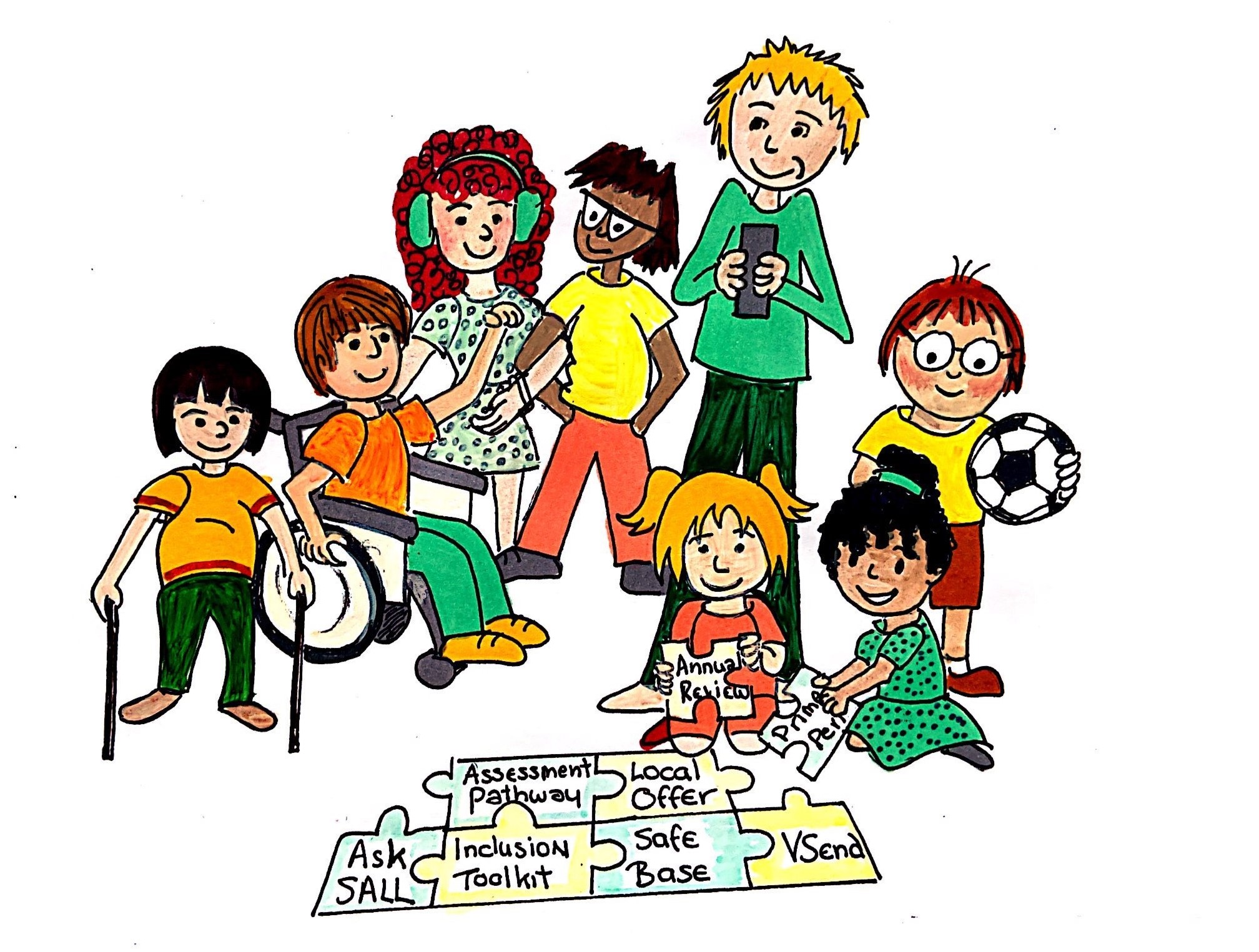Level 7-10 strategies to support highly specialised interventions
High quality teaching, targeted and specialist strategies, approaches and adaptations for pupils should be implemented and supplemented
0-5
- some children with more complex needs may be making progress in much smaller steps. Developmental Journals can support with the tracking of progress in these instances
- children need a high level of input to develop receptive and expressive language skills and speech sounds to enable them to access learning and make relationships
- settings should follow the assess-plan-do-review cycle to monitor progress using the EYFS Development Matters document
- this should include provision of:
- small group input to target
- individual support to work on skill building such as speech sounds, vocabulary, sentence structure guided by external professionals
- Makaton signing in the setting to provide an inclusive environment
- use of phase one letters and sounds to develop early phonological awareness
- support and training for parents
- emphasis on support for transitions
- a monitoring system should be in place to assess the child’s needs, identify outcomes, implement support and monitor and evaluate progress.
- planned reviews including the parent and child should take place regularly
5-16
In addition to previous strategies, staff should consider:
- adapted or bespoke curriculum
- teaching of independent life skills
- focus on functional communication skills where appropriate
- emphasis on language, communication and interaction being the focus of an adapted curriculum and integrated into all learning and social opportunities
- extensive use of individual visual support in all areas of the curriculum. For example, signing, timetables, vocabulary dictionaries, workstations, resources and rewards to enhance learning and develop independence
- curriculum delivered through structured practical experiential learning opportunities
- teaching delivered at a simple level and slower pace, with frequent repetition and over learning
- all verbal communication used by staff, to be supported visually using gesture, sign, modelling, objects, photos or symbols
- pre teaching and over learning of vocabulary
- dictaphones, laptop, symbols, shape coding
- likely to benefit from a Total Communication approach which values any effective means of communication. For example, sign, gesture, body language, objects or photos
- alternative communication systems to support expressive communication (low or high tech). This may include object based systems, photos, text or symbols
- provision to meet additional sensory or motor needs as appropriate
- emphasis on social communication and social skills development (with specialist advice)
- support in unstructured learning environments and break and lunchtimes
- daily access to staff who are skilled in supporting emotional regulation through the use of visual support, AAC, resources and motivators
- a structured approach to emotional support from others is required
- the pupil accesses small group or individualised support, to work on targets as advised by speech and language therapy
- access to regular support to develop social skills and support emotional regulation
- access to daily group and individual support to extend social skills, social interaction and social use of language
- additional adults support the pupil individually under the direction of the teacher to:
- work on modified curriculum tasks (additional time needed to prepare resources including visual support to enhance access to learning)
- embed language learning and generalise new skills into functional and curriculum activities
- access for teaching staff to appropriate resources, guidance and support from specialist staff, in order to carry out specific interventions


